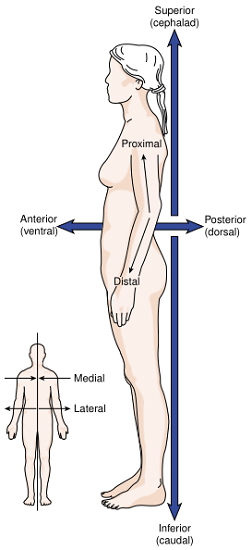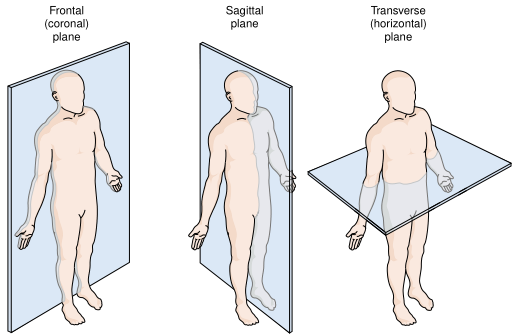- 签证留学 |
- 笔译 |
- 口译
- 求职 |
- 日/韩语 |
- 德语
In describing the location or direction of a given point in the body, it is always assumed that the subject is in the anatomical position, that is, upright, with face front, arms at the sides with palms forward, and feet parallel, as shown in the small diagram in Figure1.

FIGURE 1. Directional terms. (Reprinted with permission from Cohen BJ, Wood DL. Memmler's The Human Body in Health and Disease. 9th Ed. Philadelphia: Lippincott Williams & Wilkins, 2000.)
In this stance, the terms illustrated in Figure 5-1 and listed in Display 5-1 are used to designate relative position. Figure2 illustrates planes of section, that is, directions in which the body can be cut. A frontal plane, also called a coronal plane, is made at right angles to the midline and divides the body into anterior and posterior parts. A sagittal (SAJ-i-tal) plane passes from front to back and divides the body into right and left portions. If the plane passes through the midline, it is a mid-sagittal or medial plane. A transverse plane passes horizontally, dividing the body into superior and inferior parts.

FIGURE 2. Planes of division. (Reprinted with permission from Cohen BJ, Wood DL. Memmler's The Human Body in Health and Disease. 9th Ed. Philadelphia: Lippincott Williams & Wilkins, 2000.)
责任编辑:admin
